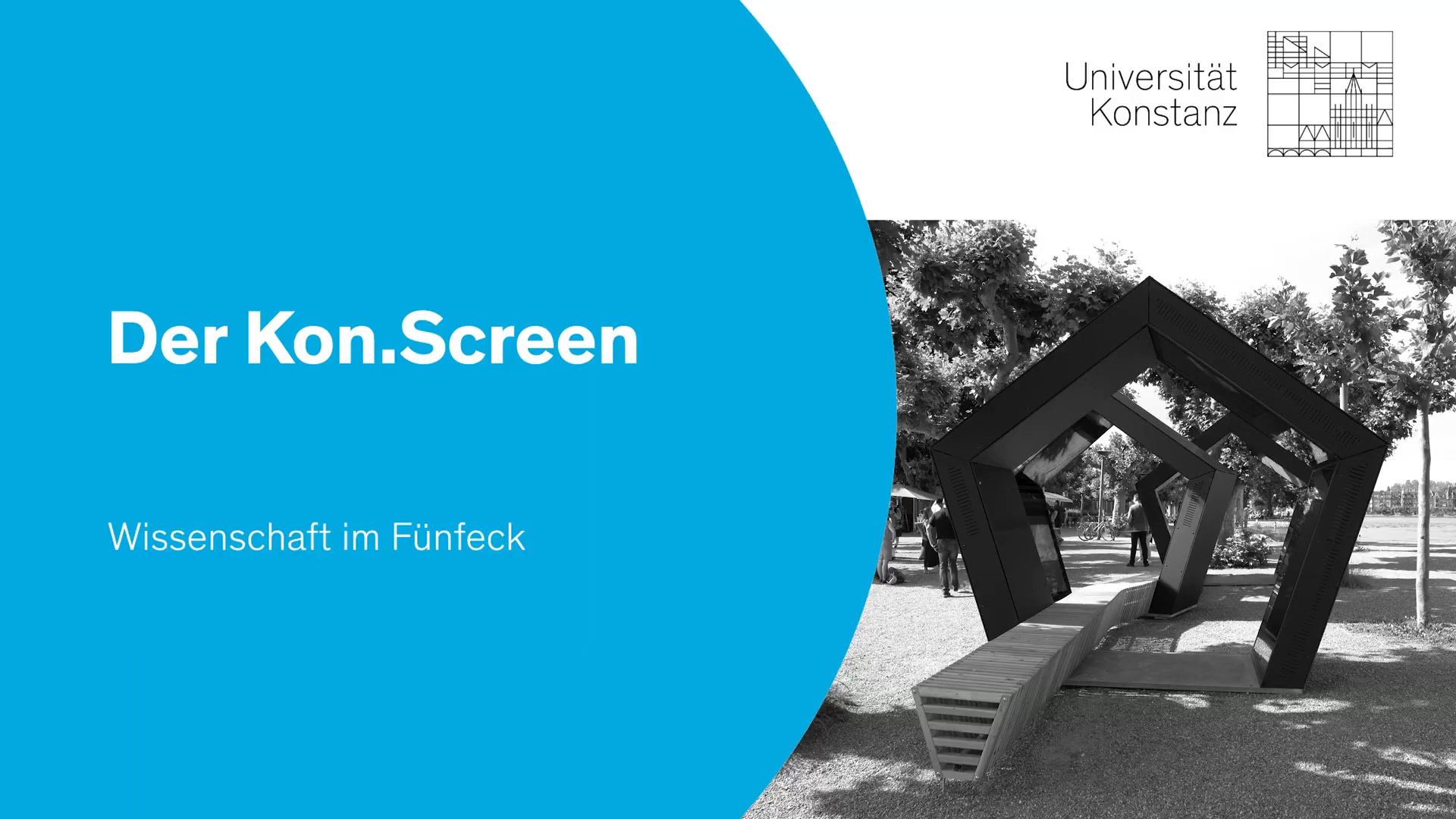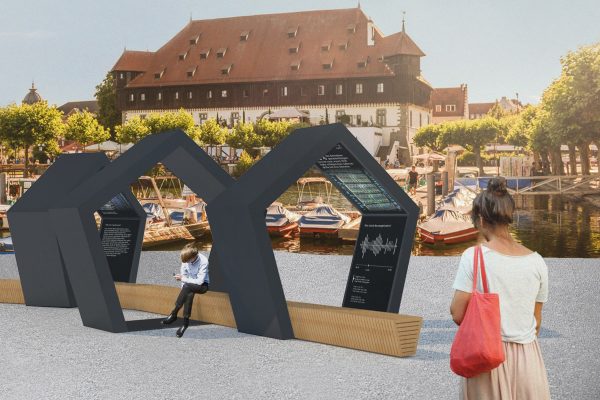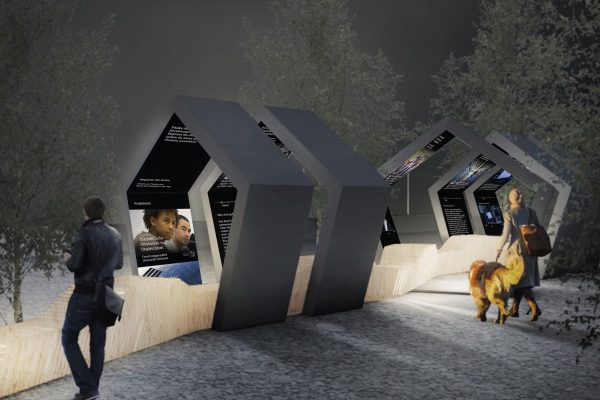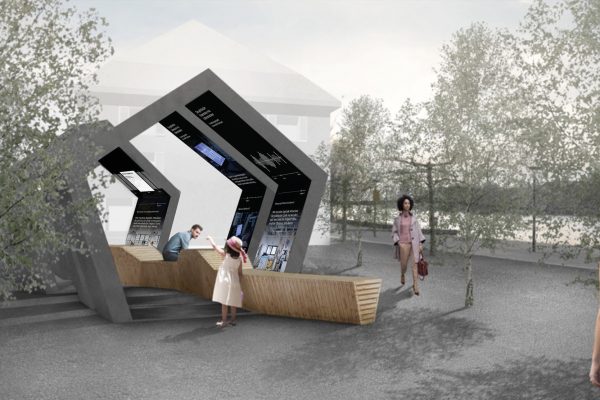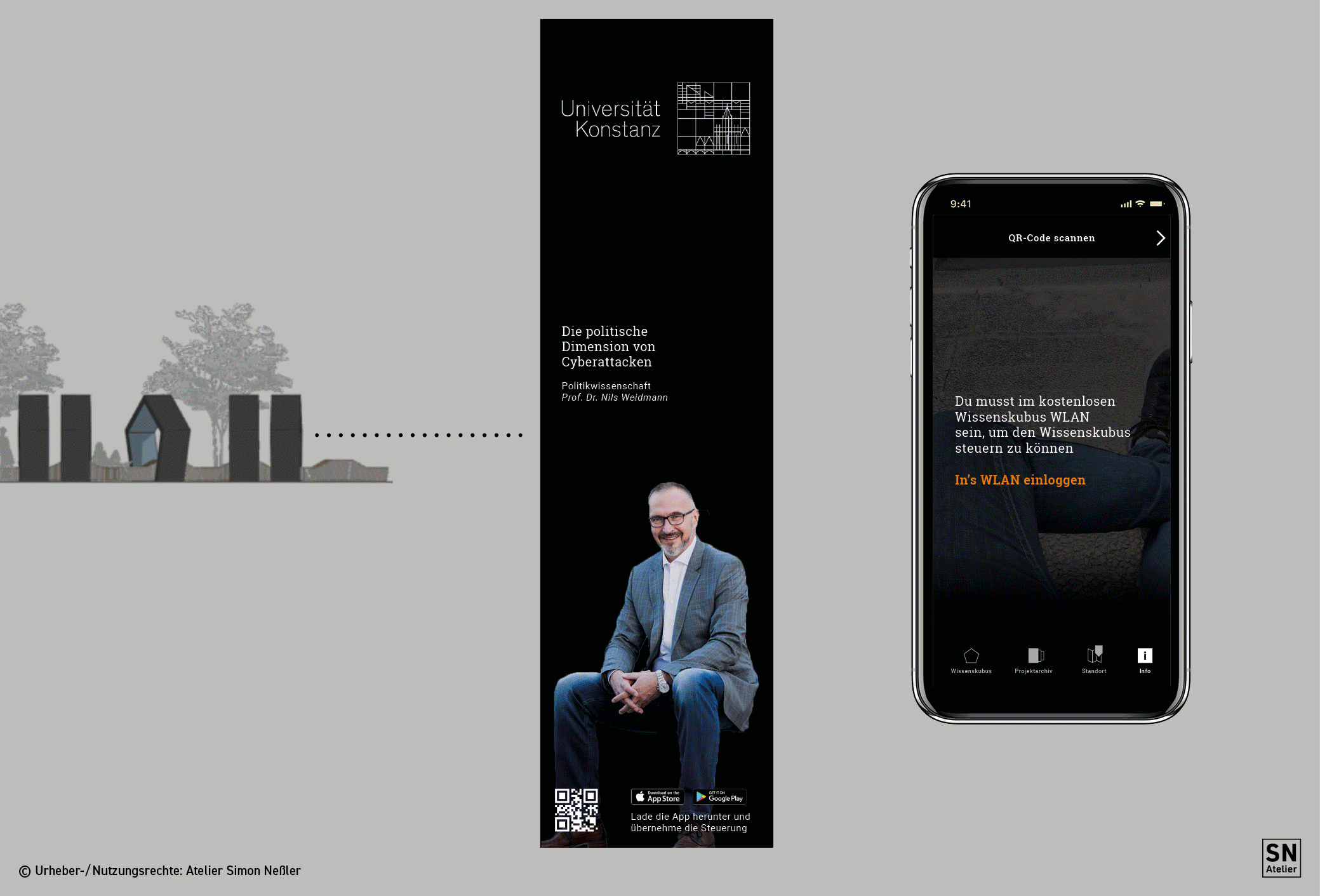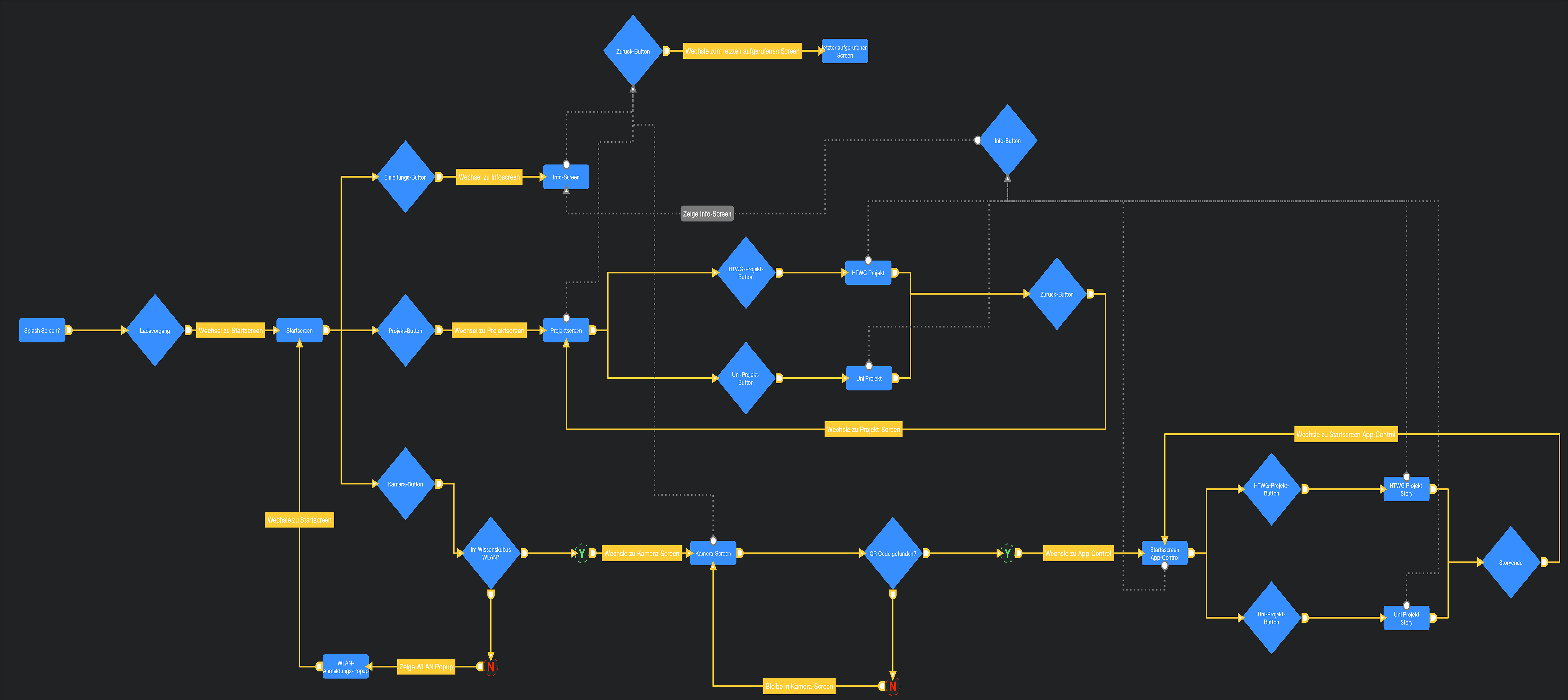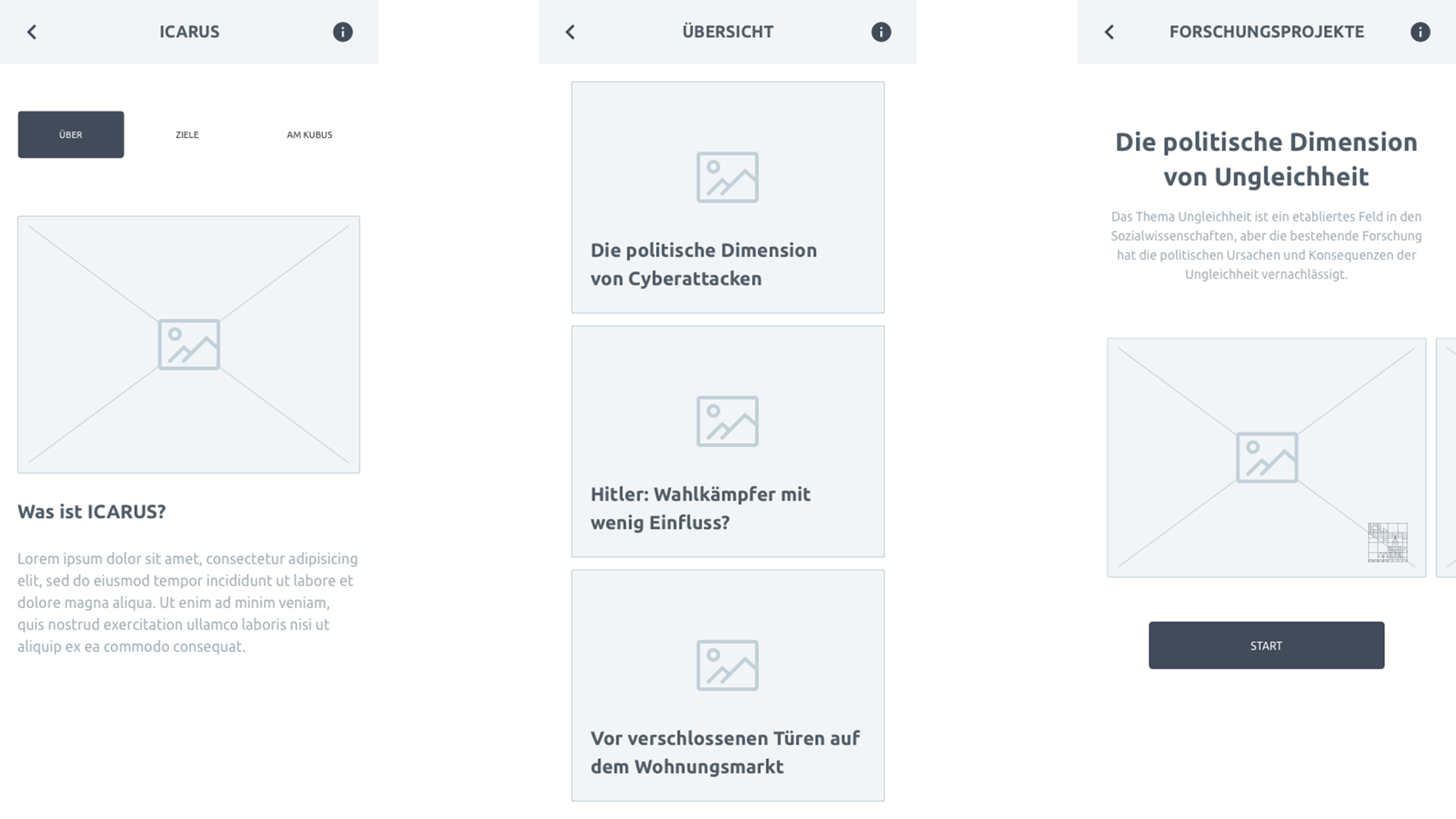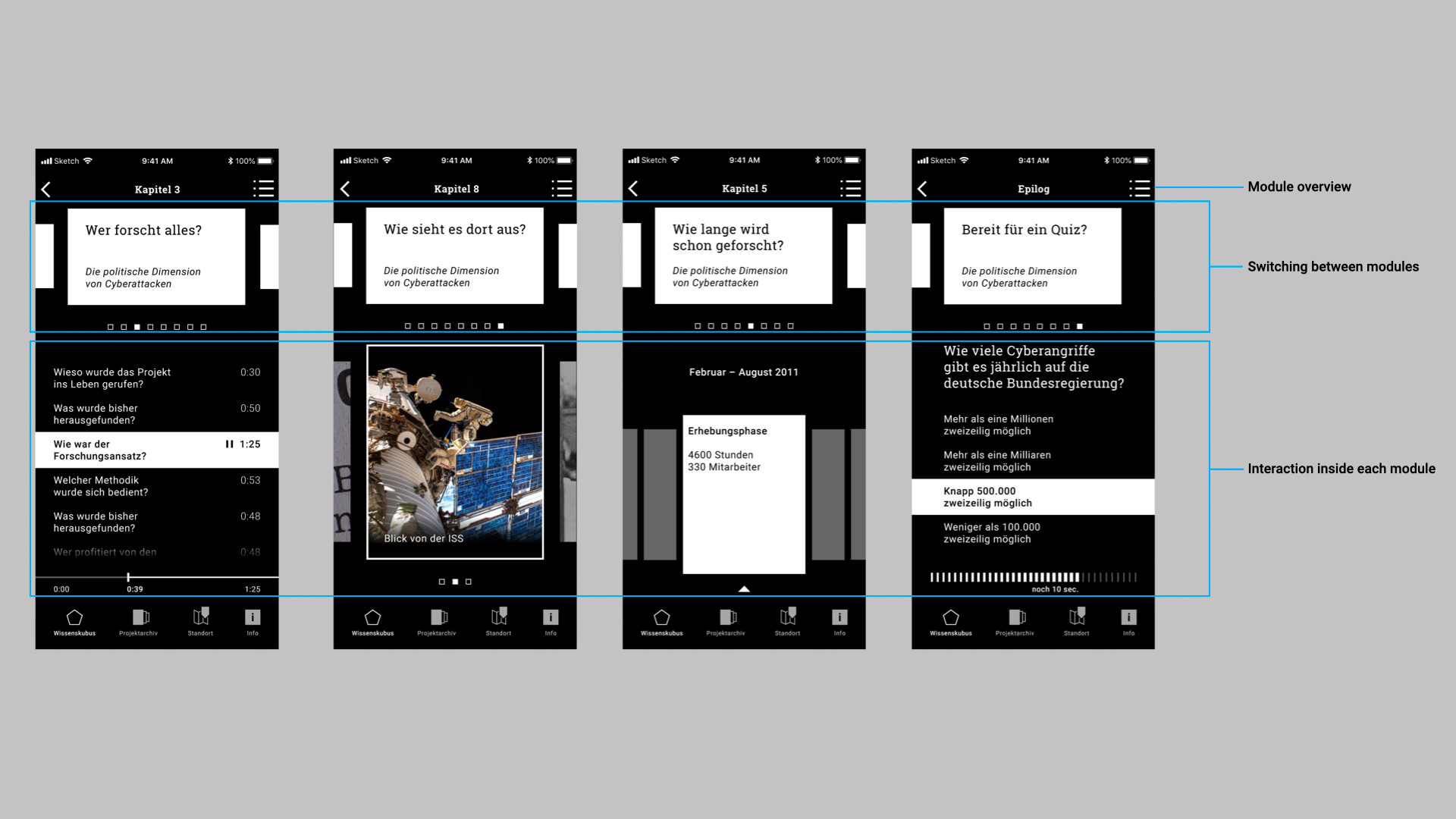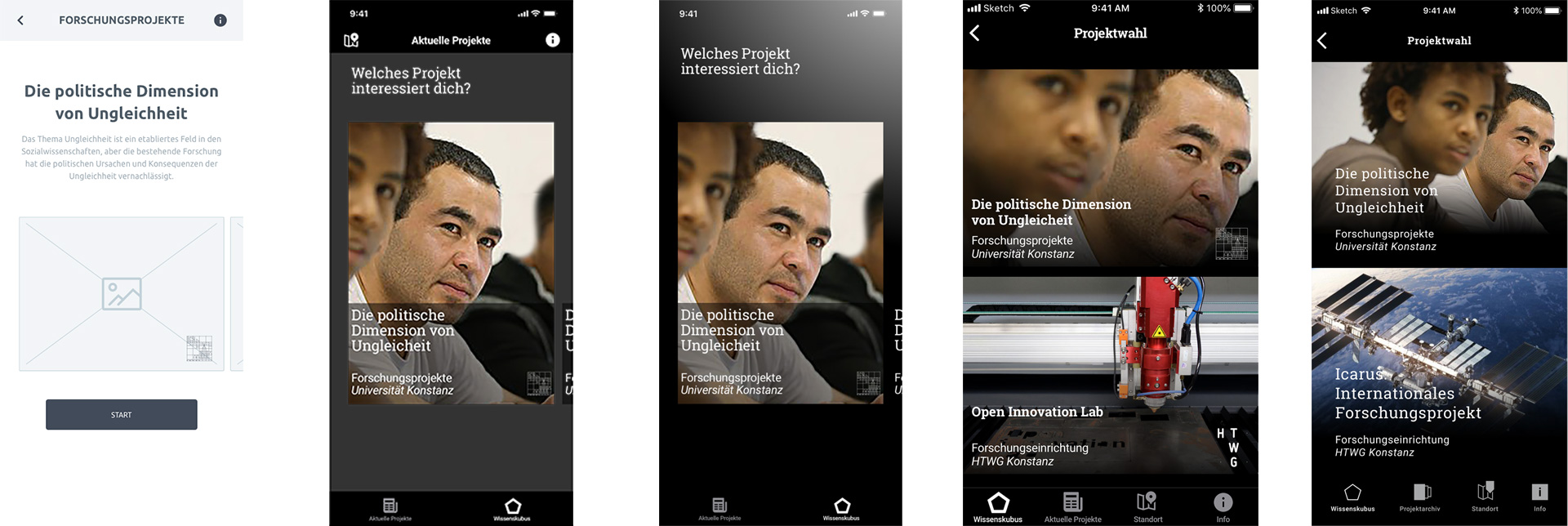Designing An Interactive Public Display To Communicate Research Of The University Of Konstanz To Its Citizens
Client
- University of Konstanz
Team
- 1 Communication Designer
- 3 Architects
Year
- 2017 – 2021
Tasks
- Concept
- Design
- IT Project Management
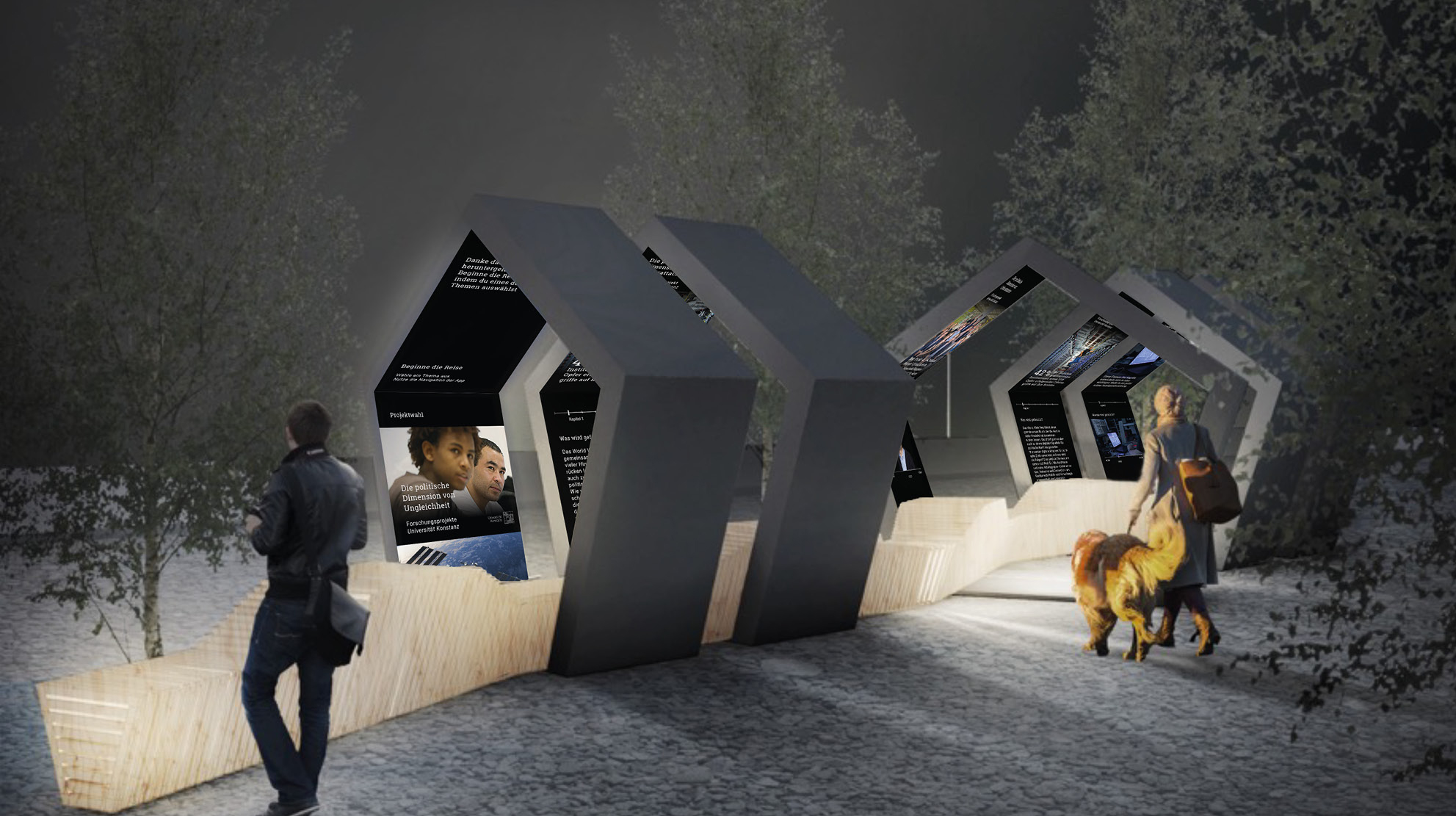
How can the university of the city of Konstanz get in contact with its citizens?
„Bring the university into the city“ was the guiding principle of a major project of the University of Konstanz that began in 2017. In cooperation with the University of Applied Sciences Konstanz (HTWG), Mainau Island, and the City of Konstanz, the University developed the installation KON.SCREEN, which informs Konstanz’s citizens and visitors on ongoing research. Three extensive pentagons, containing large vertical screens, are set up at alternating areas in Konstanz. The visitors can control the content shown on the screens using a smartphone app. Together with a communication designer, I created the interaction design and screen design for both the screen content and the smartphone app. Additionally, I support the project as a technical and IT project manager. The installation will be launched in the city of Constance in June of 2021.
The official KON.SCREEN video shows how the KON.SCREEN is set up and us, celebrating its opening 😉
Results
KON.SCREEN aims to bring a piece of the university to varying touristic locations in Konstanz as a kind of mobile exhibition. It consists of a modular bench and three extensive pentagons made of steel, each housing two large vertical displays that present current research. The design is captivating in its simplicity and openness and integrated into the beautiful environment in Konstanz. What is special about the installation is that it can and will move several times a year to different locations in Konstanz’s urban space.
KON.SCREEN is set up at alternating touristic locations in the urban area of Konstanz, such as in front of the Konzil.
KON.SCREEN conveys socially relevant topics from science and research in a way that can be experienced up close and interactively. At the same time, it should not disrupt the beautiful environment of Konstanz. KON.SCREEN achieves this by using three different, consecutive modes: The Idle Mode, the Invitation Mode, and the Main Mode. It is up to the visitor to decide how deeply they want to immerse themselves in the world of science.
The Idle Mode
The Idle mode is a kind of screensaver and shows as long as no visitor is inside a pentagon. Cropped objects move slowly across the screens. At the same time, textual and pictorial information about the current research project appears and vanishes again in beautifully choreographed animations.
The Invitation Mode
As soon as a visitor sits inside a pentagon, the idle mode stops and fades into the Invitation mode. A life-sized researcher of the current research project appears on the screen and directly addresses the visitor. The researcher asks the visitor to download the app but also explains in short what the research project is about.
The main mode
The Main mode is activated when a visitor scans the QR code displayed in the Invitation mode with the KON.SCREEN app. Here, the university reaches its goal of directly interacting with the visitors through the interplay of the large public displays and the smartphone app. The app allows each visitor to control the content on the KON.SCREEN. For example, visitors can interview a researcher by asking them predefined questions via the app or control the playback of videos.
Process
For KON.SCREEN, I created the interaction design and screen design for both the screen content and the smartphone app in collaboration with the Atelier Simon Neßler. Additionally, I still support the project as a technical and IT project manager.
Kick-Off
In 2018, I teamed up with Simon Neßler of Atelier Simon Neßler – who I previously worked with on Rebuild Palmyra? – to create the interaction and screen design for the KON.SCREEN exhibit. At this point, the architectural design of the exhibit was already at an advanced stage. It was created by five architecture students, who won a competition with their concept for a structurally and thematically attractive exhibition on science communication. However, while the architectural design was nearly finished, the interaction and screen design was only sketched out. The only requirement was that the content on the KON.SCREEN should be interactive using an app.
Research
The university already had two research projects chosen with which they wanted to start. Simon Neßler and I took these projects as inspiration to see what commonalities and differences they have. Our goal from the start was clear: Creating a modular installation with which almost any research project can be presented in a compelling way – from visually engaging projects to more text-focused, abstracts ones. Based on this we derived a set of modules that we wanted to integrate. These included, among others, an interview, video, photo, and quiz module.
Interaction Design
Next, I sketched out how the visitor could interact with the KON.SCREEN, focussing both on the overall visitor journey and on more fine-grained interactions with the installation or the app. Here, I started off with a more technical approach, thinking about different situations the user could be in and how this would be reflected in the app. Simultaneously, I created the first wireframes in Sketch.
Screen Design
The wireframes and user flow gave me all the things I needed to focus on the (almost) final screen design. For this, I also used Sketch. The most challenging design aspect was that the user could switch between modules but at the same time interact with the content for each module. Here, I looked for inspiration in other apps and found it in Blinkist. At that time, Blinkist used a sort of carousel navigation on top of the screen to switch between chapters. Content for each chapter was then situated below. I mirrored this in the KON.SCREEN app.
I iteratively refined the design for all screens. Simon Neßler then did the final design before we handed over the project to the developers.
Used Tools
Hardware
Android and iOS smartphones
Software
Sketch, Overflow, Keynote, InDesign
Languages
No programming involved
